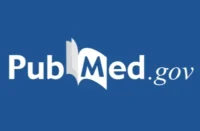⚡ Quick Summary
This study explores the use of multimodal machine learning to identify language and speech markers in mental health diagnostics. The findings suggest that multimodal approaches can achieve comparable or superior performance to unimodal methods, particularly in identifying positive cases of mental health markers.
🔍 Key Details
- 📊 Dataset: DAIC-WOZ dataset from clinical interviews
- 🧩 Features used: Text and audio data
- ⚙️ Technology: Various machine and deep learning algorithms including Support Vector Machines and Neural Networks
- 🏆 Performance: Unimodal text models: Accuracy 78%-87%, AUC-ROC 85%-93%; Unimodal audio models: Accuracy 64%-72%, AUC-ROC 53%-75%
🔑 Key Takeaways
- 📊 Multimodal integration enhances the diagnostic capabilities for mental health disorders.
- 💡 Unimodal text models outperformed audio models in accuracy and AUC-ROC scores.
- 🏆 Multimodal models achieved comparable accuracy to unimodal text models while outperforming them in F1 scores.
- 🤖 Feature engineering and binary label creation processes were refined to improve model performance.
- 🌍 This study sets the stage for future research into more sophisticated fusion techniques in mental health diagnostics.

📚 Background
The diagnosis of mental health disorders has traditionally relied on unimodal approaches, focusing on either text or audio data. However, recent advancements in machine learning have opened the door for multimodal approaches, which combine various data types to enhance diagnostic accuracy. This study aims to bridge the gap by compiling a comprehensive list of mental health markers and evaluating the effectiveness of multimodal methods.
🗒️ Study
Conducted using the DAIC-WOZ dataset, this research involved the development of both unimodal and multimodal models to analyze text and audio data derived from clinical interviews. The study focused on creating robust models that could effectively identify language and speech markers associated with a wide range of mental health disorders.
📈 Results
The results demonstrated that unimodal text models achieved an accuracy of 78% to 87% and an AUC-ROC score between 85% and 93%. In contrast, unimodal audio models showed lower performance, with accuracy ranging from 64% to 72% and AUC-ROC scores between 53% and 75%. Notably, the multimodal models not only matched the accuracy of unimodal text models but also excelled in F1 scores, particularly in identifying positive cases.
🌍 Impact and Implications
The implications of this study are significant for the field of mental health diagnostics. By demonstrating the effectiveness of multimodal machine learning, this research highlights the potential for improved diagnostic tools that can lead to better patient outcomes. The integration of various data types could pave the way for more accurate and comprehensive assessments of mental health disorders, ultimately enhancing treatment strategies.
🔮 Conclusion
This study underscores the importance of multimodal integration in mental health diagnostics. By refining existing methodologies and exploring new fusion techniques, researchers can develop more effective diagnostic tools. The future of mental health assessment looks promising, with the potential for deeper learning models to further enhance our understanding and identification of mental health disorders.
💬 Your comments
What are your thoughts on the use of multimodal machine learning in mental health diagnostics? We invite you to share your insights and engage in a discussion! 💬 Leave your comments below or connect with us on social media:
Multimodal machine learning for language and speech markers identification in mental health.
Abstract
BACKGROUND: There are numerous papers focusing on diagnosing mental health disorders using unimodal and multimodal approaches. However, our literature review shows that the majority of these studies either use unimodal approaches to diagnose a variety of mental disorders or employ multimodal approaches to diagnose a single mental disorder instead. In this research we combine these approaches by first identifying and compiling an extensive list of mental health disorder markers for a wide range of mental illnesses which have been used for both unimodal and multimodal methods, which is subsequently used for determining whether the multimodal approach can outperform the unimodal approaches.
METHODS: For this study we used the well known and robust multimodal DAIC-WOZ dataset derived from clinical interviews. Here we focus on the modalities text and audio. First, we constructed two unimodal models to analyze text and audio data, respectively, using feature extraction, based on the extensive list of mental disorder markers that has been identified and compiled by us using related and earlier studies. For our unimodal text model, we also propose an initial pragmatic binary label creation process. Then, we employed an early fusion strategy to combine our text and audio features before model processing. Our fused feature set was then given as input to various baseline machine and deep learning algorithms, including Support Vector Machines, Logistic Regressions, Random Forests, and fully connected neural network classifiers (Dense Layers). Ultimately, the performance of our models was evaluated using accuracy, AUC-ROC score, and two F1 metrics: one for the prediction of positive cases and one for the prediction of negative cases.
RESULTS: Overall, the unimodal text models achieved an accuracy ranging from 78% to 87% and an AUC-ROC score between 85% and 93%, while the unimodal audio models attained an accuracy of 64% to 72% and AUC-ROC scores of 53% to 75%. The experimental results indicated that our multimodal models achieved comparable accuracy (ranging from 80% to 87%) and AUC-ROC scores (between 84% and 93%) to those of the unimodal text models. However, the majority of the multimodal models managed to outperform the unimodal models in F1 scores, particularly in the F1 score of the positive class (F1 of 1s), which reflects how well the models perform in identifying the presence of a marker.
CONCLUSIONS: In conclusion, by refining the binary label creation process and by improving the feature engineering process of the unimodal acoustic model, we argue that the multimodal model can outperform both unimodal approaches. This study underscores the importance of multimodal integration in the field of mental health diagnostics and sets the stage for future research to explore more sophisticated fusion techniques and deeper learning models.
Author: [‘Drougkas G’, ‘Bakker EM’, ‘Spruit M’]
Journal: BMC Med Inform Decis Mak
Citation: Drougkas G, et al. Multimodal machine learning for language and speech markers identification in mental health. Multimodal machine learning for language and speech markers identification in mental health. 2024; 24:354. doi: 10.1186/s12911-024-02772-0
